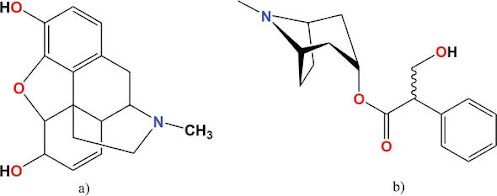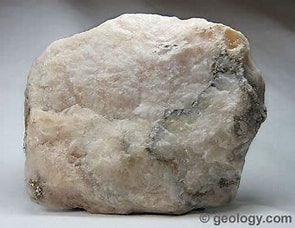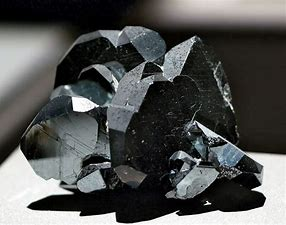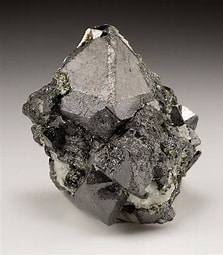1. Introduction
Many natural substances can be found in nature. Alkaloids appear to be unique among the several types of naturally occurring organic molecules, including carbohydrates, lipids, proteins, amino acids, anthocyanins, flavonoids, and steroids. What distinguishes them? They're made up of amino acids and can be produced by plants and animals as secondary metabolites. In living organisms, these molecules perform a crucial role. Alkaloids have long been crucial to humans, despite the fact that they are secondary metabolites, which may suggest that they are ineffective. In very little amounts, alkaloids had powerful biological impacts on animal and human organisms. Alkaloids are found in a variety of foods and beverages, as well as in stimulant pharmaceuticals. Anti-inflammatory, anticancer, analgesics, local anesthetic and pain alleviation, neuropharmacology, antibacterial, antifungal, and a variety of other activities were demonstrated. Alkaloids are important in medicine and various aspects of human life as diet elements, supplements, and medications. Alkaloids are also significant substances in organic synthesis for the development of novel semisynthetic and synthetic drugs with potentially higher biological activity than their parent compounds.
2.Essential oils
Extraction of essential oils is expensive because
of the large amount of raw material required to produce
a few milliliters of oil. This explains the high prices
required for genuine essential oils. For example, to
obtain a single drop of essential rose oil, approx. 60
roses . However, there are also less expensive oils due
to the abundance of inexpensive raw materials and high
productivity. Such oils are citrus–lemon, orange,
bergamot, lime, lemongrass oil, tea tree oil. So, the
essential oil is very precious, but only one drop is
sufficient for beneficial results, moreover, overtaking a 2
% dosage is toxic and produces adverse effects. Essential oil is not actually an oil
because it contains no fatty substance. It is obtained
from the essence rich in natural flavors and active
ingredients that it secretes the cells of certain parts of
the plant. Precious liquids are obtained by distilling or
pressing the secretory organs. For example, citrus peel
is cold pressed, and the other parts of the plant
(stem, leaves, flowers, root, wood) are distilled, 4. These
processes result in an aromatic concentrate and a
genuine source of active substances. Essential oil is also
known as volatile oil or ethereal oil
Industrial use of essential oils-
Essential oils have real therapeutic
properties–cure certain diseases and protect against
diseases and also have scientifically proven cosmetic
properties. In fact, in the recent years, numerous
studies have been conducted that have shown the
effectiveness of these herbal essences for health and
beauty. Famous cosmetic brands use various essential
oils in cosmetics, and the most expensive perfumes
contain pure essential oils, which gives them that special
note and makes the difference between a cheap and an
exclusive fragrance. There are essential oils that have
antibiotic properties–thyme oil, oregano oil and tea tree
oil. Essential oil efficiency is also confirmed by the
scientific world; however, essential oils are free from
contraindications and adverse effects that can often
complicate some health problems.
Examples of essential oils-
1) Lemongrass oil- Lemongrass oil comes from the leaves or grasses of the lemongrass plant, most often the Cymbopogon flexuous or Cymbopogon citrates plants. The oil has a light and fresh lemony smell with earthy undertones. It is stimulating, relaxing, soothing and balancing. The chemical composition of lemongrass essential oil varies according to the geographical origin; the compounds typically include hydrocarbon terpenes, alcohols, ketones, esters and mainly aldehydes
2) Bergamot oil-
The Bergamot oil is taken from the peel of the fruit and used to make medicine. Bergamot essential oil, like other essential oils, can be steam-distilled or extracted through liquid CO2 (known as “cold” extraction); many experts support the idea that cold extraction helps to preserve more active compounds in essential oils that may be destroyed by the high heat of steam distillation. The oil is commonly used in black tea, which is called Earl Grey.
3.Chemicals used in construction
1) Silica Sand-
Silica Sand is also known as Quartz Sand as it is the derived product of Quartz. With the friction of water and wind, quartz broke down into tiny granular molecules. Thus, Silica Sand is formed. They are fine non-crystalline molecules of SiO2. The mineral composition of Silica (SiO2) is a mixture of Silicon and Oxygen. They can be available on Earth Crust or can be mined for the extraction of pure silica sand. The extracted ore undergoes processing for the removal of impurities to obtain the purest form of silica sand. It is then dried up and sized to a certain particle size according to its application.
Uses of Silica Sand-
1. Construction:
It is extensively used in Construction. It is highly used in the production of mortars and concrete as it acts as a primary component for many building materials i.e., the whole grain silica sand is used in roofing shingle, cement, mortars, asphalt mixtures, and other flooring compounds. Due to its properties, it helps improves durability. Ground silica, an anti-corrosive material acts as the functional extender
2. Glass Production:
Without silica sand, glass making is impossible. To manufacture any type of glass, silica sand is the raw material. The strong chemical purity of silica sand makes it the best fit for producing any type of glass whether it could be mirror glass, fiberglass, test tubes, decorative glassware, window glasses, monitor screens, bulbs are many more
3. Metal Casting:
For the purpose of molding metals in several shapes, it is used in the foundry industry. Metal parts are cast into the sand to produce the new metal molds. Here it is also used to clean the casting surfaces as it can withstand the high temperatures of molten metal. For metals such as cast iron, steel, titanium, it is the most preferred sand for casting
Gypsum is a white to gray mineral found in the earth's crust. It is chemically known as hydrous calcium sulfate (CaSO4.2H2O) which are obtained through mining from vast veins. It gain different forms. It is seen as sand in certain areas. The gypsum stone, which is called as alabaster have the property to be carved to any sculpture forms
Use of mined Gypsum-
Gypsum is one of the widely used construction material mainly in interior designing. Properties and products of gypsum to be used as building material in construction works are discussed. Gypsum is used as surface materials. Its application is prominent in wall and ceiling construction. The use of gypsum can also be done at the field in the form of plaster. It is also manufactured as a prefabricated unit, like gypsum board which is bought at the time of installation.
4.Mineral ores
1) Hematite - Hematite is an ore of iron. It is a dark red rock from which we get iron. It has a red or brown colour with an earthy lustre. It is a heavy and usually hard oxide mineral that constitutes the most important iron ore. It is derived from the Greek word "blood" in allusion to its red colour.
Uses of Hematite-
It is one of the finest iron ores in the world and one of the most important pigment minerals as well. It is a dense and inexpensive material. It is also used for ballasts for ships. It is used as gemstones or in making jewelry as well. It can be used for its calming and protective properties. It is used as polishing compounds. Hematite is also kept in the homes because it gives great energy and the ability to get the mind to focus.
2) Magnetite -
Magnetite is a mineral and one of the main iron ores, with the chemical formula Fe²⁺Fe³⁺₂O₄. It is one of the oxides of iron, and is ferrimagnetic; it is attracted to a magnet and can be magnetized to become a permanent magnet itself. It is the most magnetic of all the naturally occurring minerals on Earth.
Uses of Magnetite-
When magnetite is added to a concrete mix, it produces heavy concrete, which is twice as dense as standard concrete. Heavy concrete is widely used in buildings that require protection from radiation, such as nuclear power plants, X-ray facilities and uranium mining sites. Heavy concrete retains heat more efficiently than standard concrete and can be used in building houses to retain solar heat. Magnetite can also be used in water filtration systems. A water filtration system with magnetite has a more aggressive backwash in the cleaning phase, as well as the ability to recover the magnetite by using a magnet. It is also used in coal mining operations as a slurry with water to remove the heavier impurities by allowing the less dense coal to float to the surface. The magnetite can be reused in this process 90 percent of the time.
5.Beeswax
Beeswax is a product made from the honeycomb of the honeybee and other bees. The mixing of pollen oils into honeycomb wax turns the white wax into a yellow or brown color. Beeswax is used for high cholesterol, pain, fungal skin infections, and other conditions. But there is no good scientific research to support these uses In foods and beverages, white beeswax and beeswax absolute (yellow beeswax treated with alcohol) are used as stiffening agents. In manufacturing, yellow and white beeswax are used as thickeners, emulsifiers, and as stiffening agents in cosmetics. Beeswax absolute is used as a fragrance in soaps and perfumes. White beeswax and beeswax absolute are also used to polish pills.
Common Uses for Beeswax
There are literally thousands of ways it is used in manufacturing, crafts, healthcare, industrial applications, etc, etc. These are just a few that you can take advantage of in your home.
- making natural wax candles
- easy sliding wooden drawers
- as a sewing aid
- makes zippers zip
- sealing envelopes with wax
- make your own furniture polish
- prevent bronze tarnishing
- natural scented wax melts
- make herbal wax sachets
- use it in canning to seal jars
- make natural food wraps
- spoon butter
- a natural non-stick pan coating
- easier grill clean up
- makes shop hand saws work smoother
- lubricate wood screws and nails
5.Alkaloids
Alkaloids are a huge group of naturally occurring organic compounds which contain nitrogen atoms or atoms (amino or amido in some cases) in their structures. These nitrogen atoms cause alkalinity of these compounds. These nitrogen atoms are usually situated in some ring (cyclic) system. For example, indole alkaloids are those that contain nitrogen atoms in the indole ring system. Generally based on structures, alkaloids can be divided into classes like indoles, quinolines, isoquinolines, pyrrolidines, pyridines, pyrrolidines, tropanes, and terpenoids and steroids. Other classification systems are connected with a family of plant species that they occur in. One of the examples is the opium alkaloids that occur in the opium poppy (Papaver somniferous). These two different classification systems cause confusion between their biological distribution and the chemical types of alkaloids, because there is no unmistakable correlation. Alkaloids (whose name originally comes from “alkali-like”) can react with acids and then form salts, just like inorganic alkalis. These nitrogen atoms can behave like a base in acid-base reactions. In general alkaloids, which are treated as amines, the same as amines in their names, have the suffix -ine. Alkaloids in pure form are usually colorless, odorless crystalline solids, but sometimes they can be yellowish liquids. Quite often, they have a bitter taste. Now more than 3000 of alkaloids are known in over 4000 plant species.
Uses of Alkaloids-
1) Pharmaceutical and medicinal use of alkaloids-
Alkaloids showed quite diverse medicinal properties. Many of them possess local anesthetic properties, but their practical use is limited for clinical purposes. Morphine is one of the most known alkaloids which has been used and still is for medical purposes. This alkaloid is a powerful narcotic which is used for the relief of pain, but its usefulness is limited because of addictive properties.

Methyl ether derivative of morphine—codeine—naturally occurring next to morphine in the opium poppy, possesses an excellent analgesic activity and is shown to be relatively nonaddictive. These alkaloids act as respiratory or cardiac stimulants. Next, the alkaloid which is used as medication in many clinical applications is atropine . For example, injection with atropine is given to treat bradycardia (low heart rate).
Tubocurarine is an alkaloid, is an ingredient of poison curare, and is used in surgery as muscle relaxant. Alkaloids vincristine and vinblastine are used as chemotherapeutic agents in the treatment of many cancer types. Cocaine, an alkaloid present in Erythroxylon coca is a potent local anesthetic. Ergonovine, an alkaloid from the fungus Claviceps purpurea, and the second alkaloid ephedrine isolated from Ephedra species both act as blood vessel constrictors. Also ephedrine is used in bronchial asthma and to relieve discomfort of hay fever, sinusitis, and common colds.
2) Alkaloids in human food and drinks
Many alkaloids are elements of human diet, both in food and drinks. The plants in the human diet in which alkaloids are present are not only coffee seeds (caffeine), cacao seeds (theobromine and caffeine), and tea leaves (theophylline, caffeine) but also tomatoes (tomatine) and potatoes (solanine). The most common alkaloid is caffeine which has also an application as an ingredient of soft drinks like Coca-Cola to improve their taste and in drinks for active people who do sport.

3) Alkaloids as stimulants -
Alkaloids stimulate human organisms, for example, the central nervous system, or directly work on the human brain. Nicotine is an alkaloid obtained from the tobacco plant (Nicotiana tabacum) and is a potent stimulant and the main ingredient in tobacco smoked in pipes, cigars, and cigarettes. This alkaloid is highly addictive.

4) Other practical use of alkaloids
Besides activities mentioned above, alkaloids from many different plant species have many other useful applications such as antiparasitic, anti plasmodial, anticorrosive, antioxidative, antibacterial, anti-HIV, and insecticidal activities.
Conclusion-
There are various naturally occurring materials that useful for the industrial purposes.
This blog explains about the essential oil industry also the Construction industry as well as the use of alkaloid in the industry. Naturally occurring materials plays very important role in the industry as all the artificial materials are made by using natural materials only also this blog explains some of the famous and very useful materials that are used on a daily basis in industry.
Blog By :
Second Year Chemical Engineering
Division - A
Batch -3
Group -1
Guided by: - Prof. Priyanka Kshirsagar
Vishwakarma Institute of Technology, Pune
Members-
1) Sohan Kamble - 45
2) Kaustubh Nilakhe - 46
3) Omkar Kedari - 47
4) Sanket Khade - 48
5) Arbaz Qureshi - 52
6) Swarada Kulkarni - 56
Thankyou for Reading Our blog ✌












Comments
Post a Comment